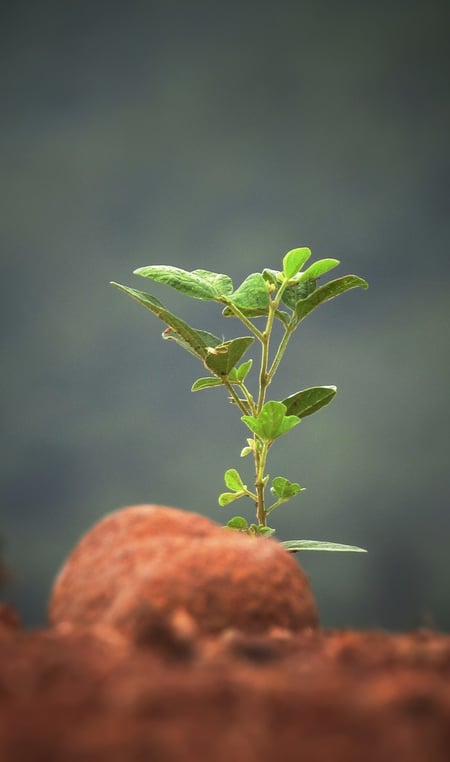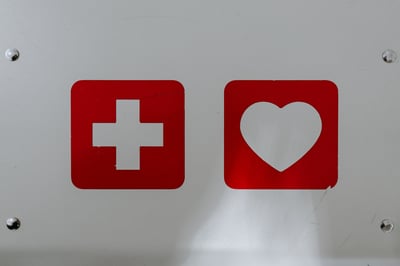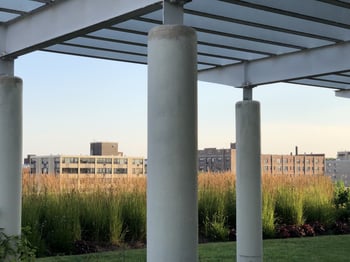A green roof, like any other system, can get sick. When that happens, you need first aid fast – but how do you recognize it?
Put down the chai latte and come out of that lotus pose for a moment. Turn off the whale songs too. We promise this won’t take long.
Okay. That’s better. Now we have a question for you:
When you imagine green roof stewardship, what do you see?
If you’re like most people, your answer is something along the lines of, Wait, green roofs need stewardship? Don’t they, like, take care of themselves?
Now, we know you regard green roofs (and green infrastructure in general) highly, but that’s not the same as knowing what’s best for an ecological system. Don’t feel bad; even some of the greatest minds in the industry occasionally forget there’s a post-handoff step: stewardship.
Sadly, not all systems get the care they need on an ongoing basis, which is where green roof first aid becomes necessary.
Why Do Green Roofs Get Sick (or Fail)?

So how do green roofs get in trouble in the first place?
First and foremost, they suffer from bad design. This can range from a poor drainage plan to bad soil or media to crappy components.
The second common problem is bad installation. Even the best design can’t compensate for an incompetent builder. (Let’s just say Ecogardens has witnessed firsthand a roof barrier installed above a drainage mat. Green roof? More like bathtub.)
Lastly, plain and simple neglect. Green roofs are delicate systems facing harsh niche environments. Without ongoing stewardship, they sicken or even die.
What’s the First Step in Administering Green Roof First Aid?
When a green roof goes south, the goal is to put it back to rights as quickly as possible. You want to recoup those benefits pronto.
After all, not only are green roofs good for the environment, they’re great for the economy as well. That means commercial property owners, private citizens, local and state governments, and more.
When they’re in a state of crisis, though, they can’t perform like they’re supposed to: water retention and detention goes down, they provide less heat absorption to the environment, they don’t make good habitats for plants and animals.
Not cool. Literally.
While you should move quickly to provide first aid, though, you must still make a careful assessment first. That means:
- Looking the roof over carefully
- Taking samples
- Testing media
- Looking for key indicator species, either showing up or disappearing, that denote a problem with the green roof
- Checking the roof’s basic structures
- Assessing plant diversity
This last is especially important.
What Happens After the Inspection?

The range of species living on a green roof is both a huge necessity for and indicator of its health. That’s why plant diversity and location are two of the most important factors in reviving a sad roof. At Ecogardens, our rescue process looks something like this:
First we work to ensure relatively even coverage of plants. We allow for some congregation of plants, but ideally, they’re well spread-out.
Note that we do not typically try to cordon plants off by color. That’s a fussy design element that doesn’t have the roof’s best interests in mind. There’s a reason one plant shows up in a certain area and does well, and leaves another area. If we let that natural process continue, everything gets sorted in the first 3 years or so, with a balanced roof as a result.
We still have to keep them out of vegetation-free zones and off nearby surfaces, not to mention clear of drains or other rooftop systems. We also remove invasive species and weeds, and check for key indicator species such as moss that tell us pH or other factors may be off.
We also adjust soil media, fertilize and check drainage layers. This might prove time-consuming, depending on the state of the roof, but it’s not usually very difficult. And except in very bad cases, we can usually resurrect a roof just fine.
Where Does Green Roof First Aid Fall Short?

There are, of course, some cases where, the problem has gone on too long and you simply can’t save the roof. It’s unfortunate, but true. Again, that’s usually due to bad installation or design that affected the underlying structure.
Remember the bathtub? Let’s just say that when you have geese swimming on your roof, that’s a problem.
In most other cases, though, even a dead green roof can still absorb and re-release water, providing important stormwater management benefits, by dint of drainage layers and soil media alone. True, we have to put in new plants, but that’s not nearly so expensive or time-consuming as rebuilding a roof.
The good news? If you maintain your roof from the get-go, the costs are always reasonable. So why wait to set up a stewardship program today?
If your green roof is suffering and needs a Band-Aid or two, Ecogardens is happy to help with that as well. All you have to do is get in touch today.


